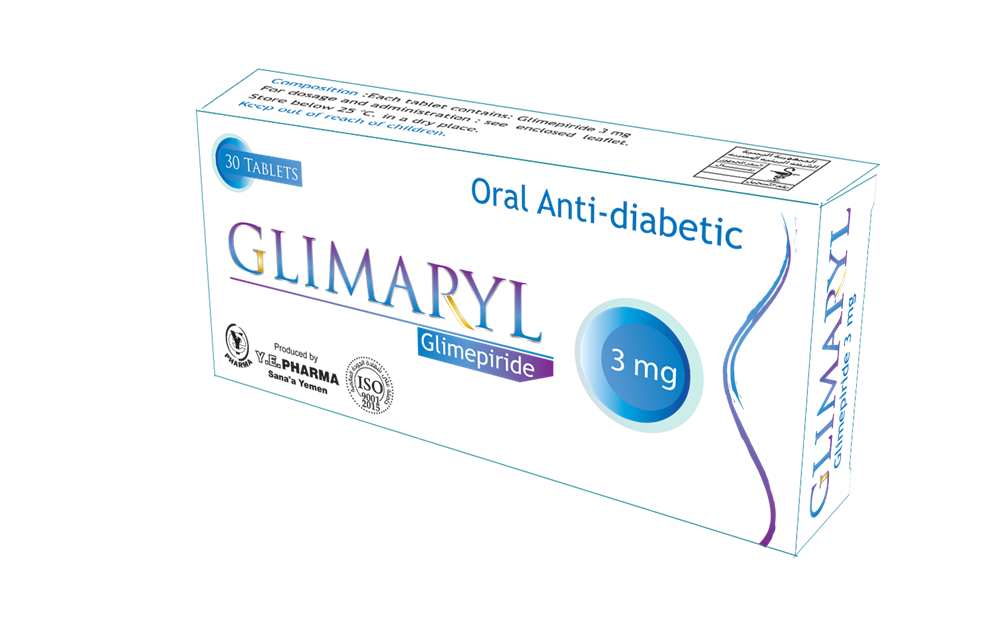
Composition
Each tablet of Glimaryl contains: 2 mg or 3 mg Glimepiride. Properties: Glimaryl belongs to sulfonylurea group, It primarily lowers blood glucose by stimulating the release of insulin from pancreatic beta cells and may decrease the rate of hepatic glucose production and increase insulin receptor sensitivity. Sulfonylureas bind to their receptors in the pancreatic beta-cell plasma membrane, leading to closure of the ATP channel, thereby stimulating the release of insulin. Indications: Glimaryl is indicated as an adjunct to diet and exercise to improve glycemic control in adults with type 2 diabetes mellitus.
Dosage
- Recommended starting dose is 1 or 2 mg once daily. May be increased in 1 or 2 mg, increments no more frequently than every 1 to 2 weeks based on glycemic response. - Maximum recommended dose is 8 mg once daily. - Starting dose in elderly and patients with renal impairment is 1 mg. - Take Glimaryl with breakfast or first meal in the day.
Contraindications
Glimaryl is not used in: - Hypersensitivity to Glimepiride or Sulfonamide derivatives. - Type 1 diabetes mellitus. - Diabetic ketoacidosis with or without coma.
Side effects
These side effects may occur such as: - Hypoglycemia. - Dizziness. - Asthenia. - Headache. - Nausea.
Precautions
Tell your doctor in these cases: - Severe renal or hepatic impairment. - Pregnancy or breast feeding. - Hemolytic anemia. - Severe hypoglycemia. - Increased risk of cardiovascular mortality with sulfonylureas. - Hypersensitivity reactions. - Pediatric patients.
Drug interactions:
Tell your doctor if you take other drugs such as: - Miconazole. - Warfarin or Aspirin. - Cimetidine or Ranitidine. - Propranolol. - Colesevelam. - Inhibitors and inducers of cytochrome P4502C9 (e.g. fluconazole and rifampin). - Drugs affecting glucose metabolism e.g. Anti-diabetic like Insulin. Package: Each box of Glimaryl contains: 3 ×10 Tablets. Storage: Store at a temperature below 25º C.